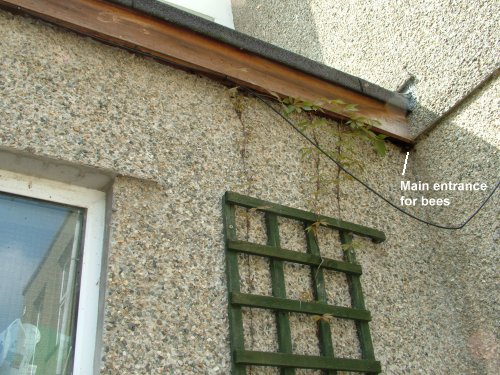
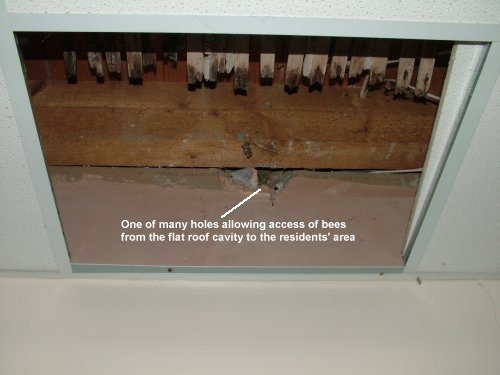
Removal of colony from the flat roof of a nursing home
On 9 April a swarm was seen covering the east wall and eaves of a flat-roofed extension containing an entrance hall, reception and treatment room of a nursing home. Within a short time they had apparently disappeared. On 19 April there was again a large amount of bee activity at the site.
Bees were entering the residents' area. Their access was traced to holes for pipes and wires in a false cieling and through the former outer wall of the main building into the extension. As an interim precaution, all visible accessible holes were sealed with expanding polyurethane foam.


As it was not entirely clear at first that an entire colony had entered the roof, a bait hive containing a swarm lure was placed on the flat roof near the site of most bee activity. The bees showed great interest in the bait hive. However, a visit to the site on 27 April showed that bees were entering the eaves of the flat roof with pollen on their legs, a sure sign that a colony had gone in.
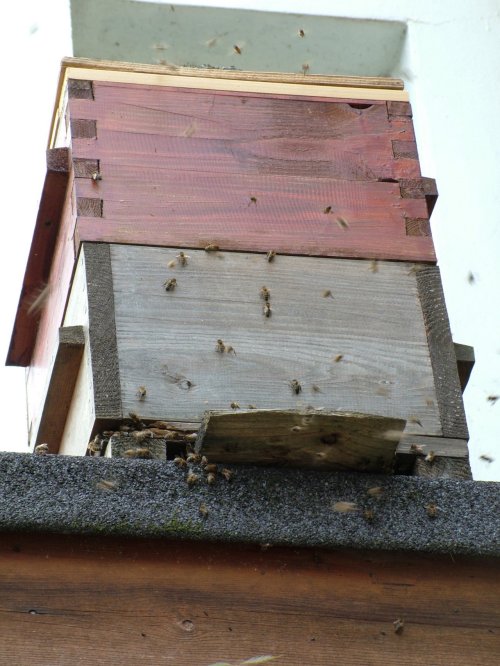
However, a visit to the site on 27 April showed that bees were entering the eaves of the flat roof with pollen on their legs, a sure sign that a colony had gone in.
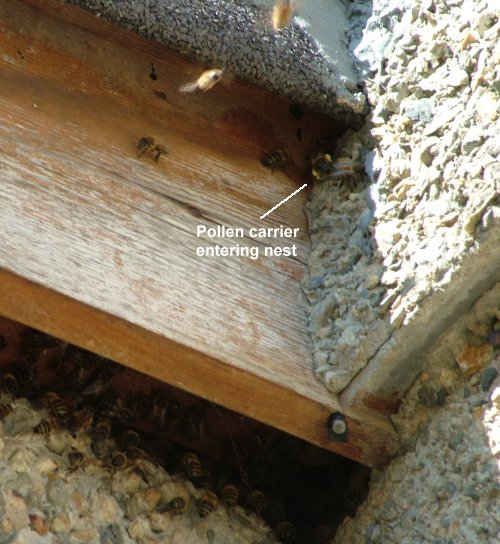
The nest was exposed on 28 April, showing apparently two nests; one on the left with pollen and honey, and one on the right with nine combs started, three containing brood.
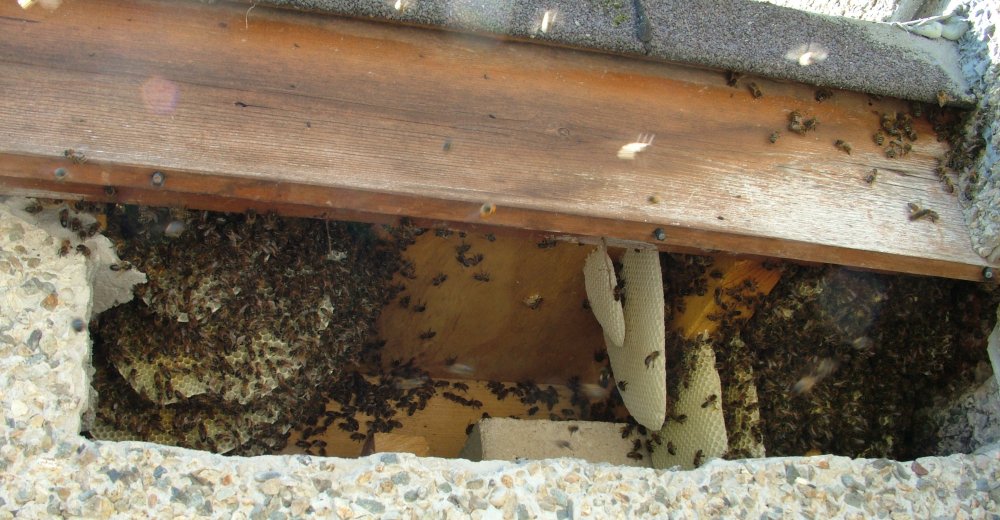
The bees were removed into a bee vacuum and the brood combs tied into frames. Both bees and comb were immediately reunited in a hive situated over three miles away. The following day pollen and nectar foragers were at work.
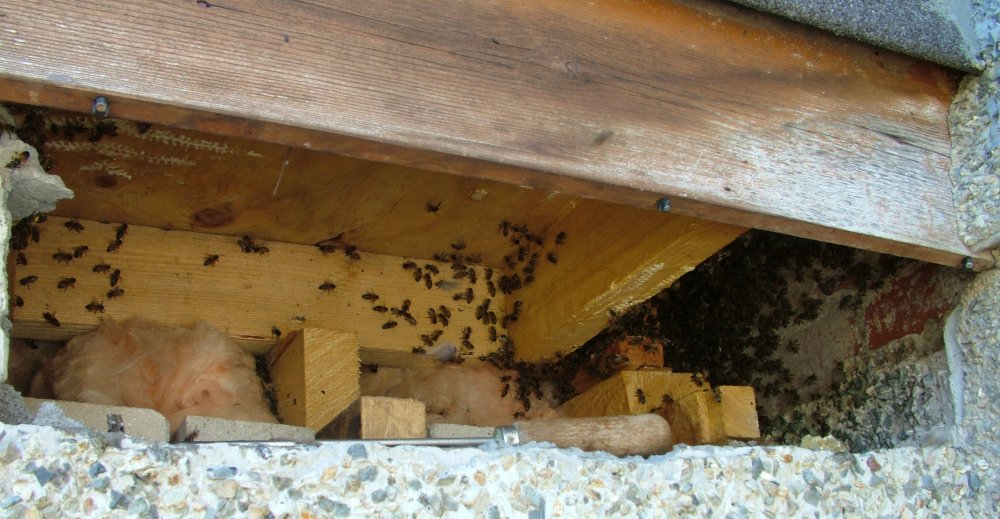
Residual bees were removed by vacuum and reunited with the rest. This was repeated the same evening. A conical bee escape was installed.
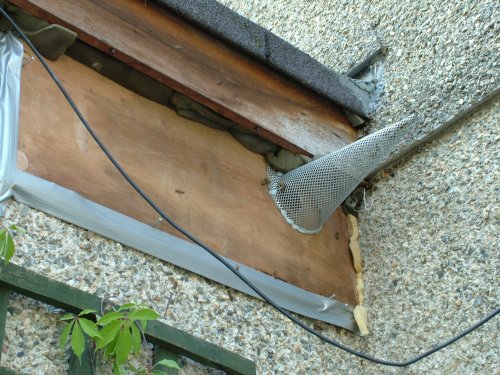
The following day (29 April) it was clear that the bee escape was being by passed via small gaps round the temporary covering over the hole in the masonry. It was reinstalled and a further cluster of residual bees was removed into the bee vacuum.
At a visit on 1 May only two bees were seen trying unsuccessfully to find a way in.